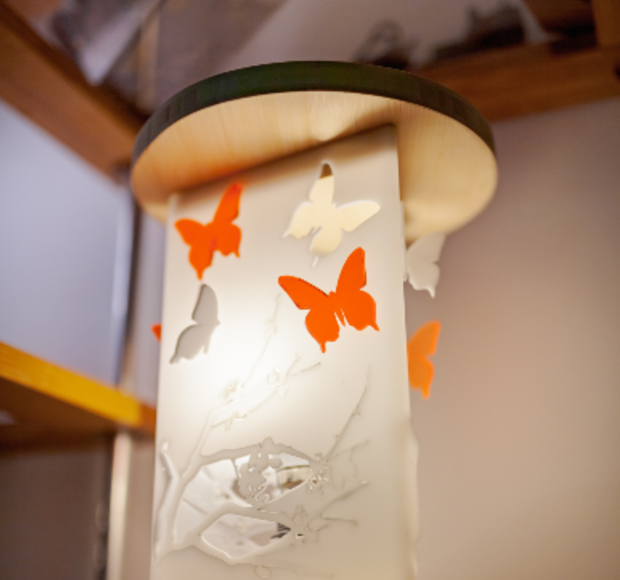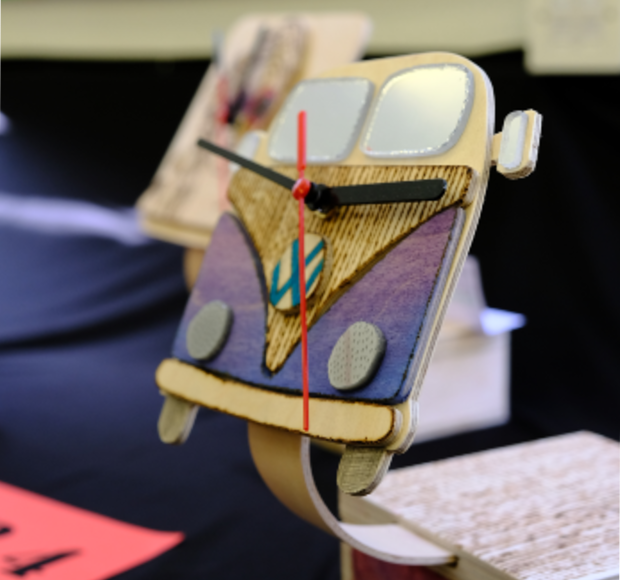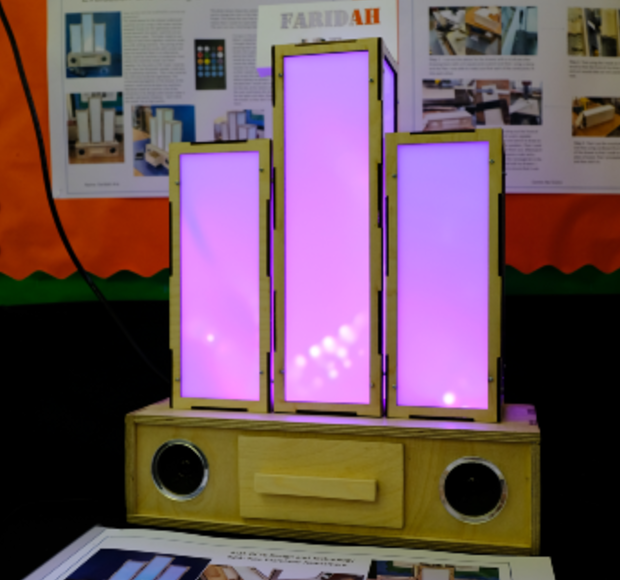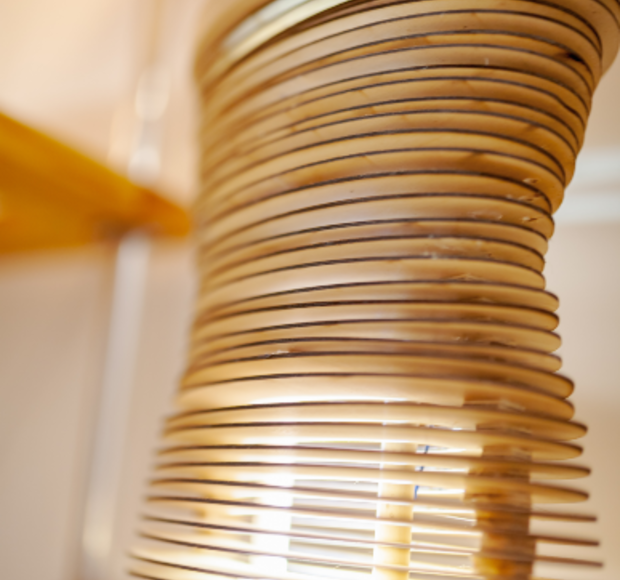
Head of Department: Ms Jennifer White
A subject that nurtures creativity
The 3D Design department focuses on problem-solving and project-based learning, developing independence and preparedness for the world beyond school. The learning environment comprises of a well-resourced workshop, a design suite and a CNC area, allowing pupils to experiment using a wide range of materials and processes to realise their design intentions. 3D Design is a practical subject with skills and understanding gained through ‘doing’. Whilst working through the design process, pupils understand how to solve problems for other people – clients, customers or the intended audience. 3D Design combines both scientific and artistic skills, as well as developing human skills such as empathy and communication – vital for success beyond school. Pupils also explore the concepts of gaining inspiration, researching, development, planning for manufacture, testing and evaluation, teaching long-working skills and the concept of continual improvement.
Creativity and independent thought are also nurtured, encouraging pupils to consider their role as individuals in something larger than themselves. Teaching opportunities to help pupils develop a sense of ownership and leadership of their project and promote decision-making skills through engagement with critical analysis.




Pupils discover how sources inspire development of ideas, drawing on the work and approach of designers, historical contexts, societies, and cultures. Equally, pupils are encouraged to consider contemporary issues and situations that could be starting points for creation. Experimentation, consideration, and exploration of communication techniques such as colour, line, shape, form, tone and texture are also fundamental to the study of 3D Design at Downe House. A skills-based approach is achieved through the use of model-making, construction, surface treatment, assembling and modelling – either physical modelling or with the use of CAD – with pupils experimenting with drawing materials, timbers, metals, polymers, composites, plaster, clay and found materials.
Project work takes the form of architectural design, product design, interior design, environmental/landscape/garden design, sculpture, ceramics, jewellery and body adornment, exhibition design, three-dimensional digital design and designs for theatre, film and television. Key skills demonstrated by pupils in submissions centre around how to develop ideas, refine their work, record their ideas and present a personal and meaningful response to a starting point or stimulus.
How is 3D Design assessed?
At GCSE and A Level, pupils are expected to demonstrate a willingness to listen carefully to advice and have a genuine interest in all aspects of the subject. Organisation and commitment are also key to success at the higher levels of study, as independent study comprises a significant amount towards submissions for assessment – there is no time limit for the majority of the assessment.
GCSE
- Component 1: Portfolio – Each pupil must select and present a portfolio of their 3D Design studies. The portfolio will include at least one sustained project developed in response to a subject, theme, task or brief. This gives pupils the opportunity to demonstrate their ability to draw together different areas of knowledge and skills. A selection of further work resulting from experiments into three dimensional techniques and prototype/product-based projects will also be included.
- Component 2: Externally set assignment – The examination board will provide a separate externally set assignment which provides pupils with the opportunity to demonstrate their learnt abilities through an extended creative response. In the Lent Term of UV there will be a 10-hour supervised, unaided practical exam conducted in examination conditions that will account for 40% of the course.
A Level
- Component 1: Personal investigation – Each pupil conducts a personal investigation supported by written material. Each pupil must investigate an idea, issue, concept, or theme which has been identified independently by them, and which leads to either a finished outcome or a series of related finished outcomes. This gives pupils the opportunity to demonstrate their ability to draw together different areas of knowledge and skills, whilst working in an area of personal interest.
- Component 2: Externally set assignment – The examination board will provide a separate externally set assignment which provides pupils with the opportunity to demonstrate their learnt abilities through an extended creative response. In the Lent Term of UVI there will be a 15-hour supervised, unaided practical exam conducted in examination conditions that will account for 40% of the course.
Further information about the teaching and learning of 3D Design may be obtained by contacting Ms Jennifer White, Head of 3D Design.
Tours & Open Mornings
The best way to find out more about Downe House is to experience it for yourself. Book a personal tour or join us at one of our Open Mornings, available throughout the year.
Discover
